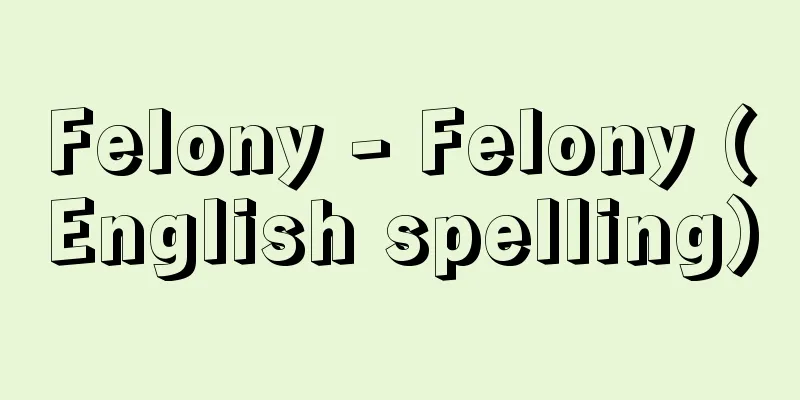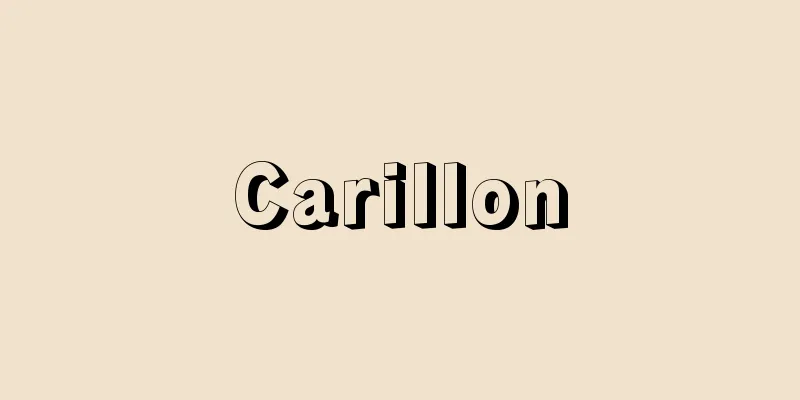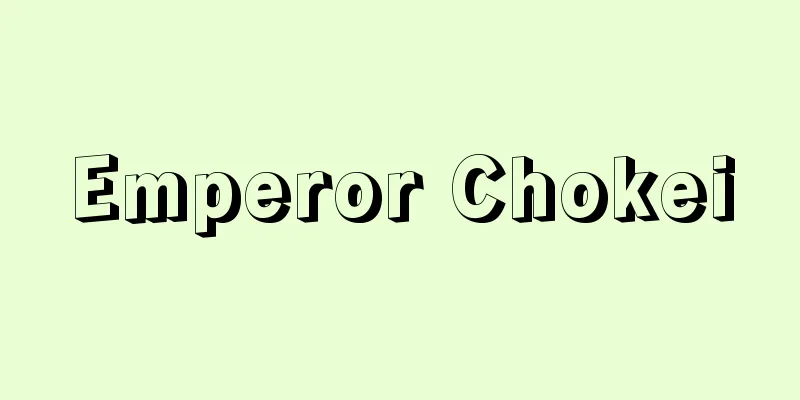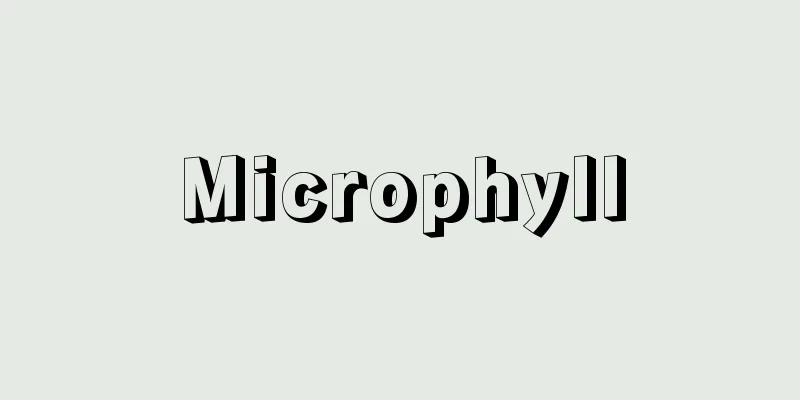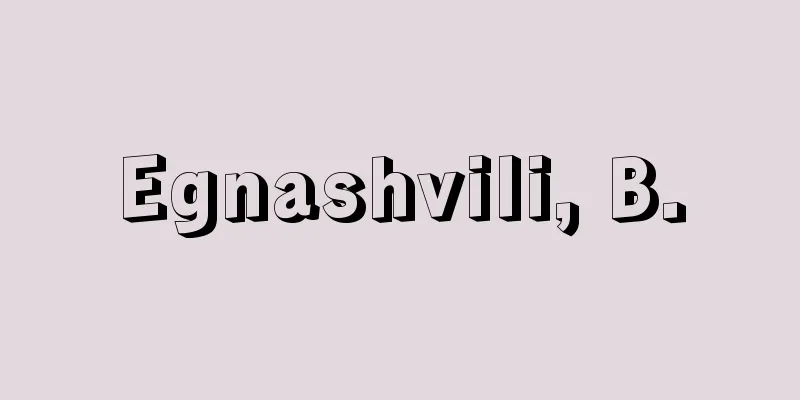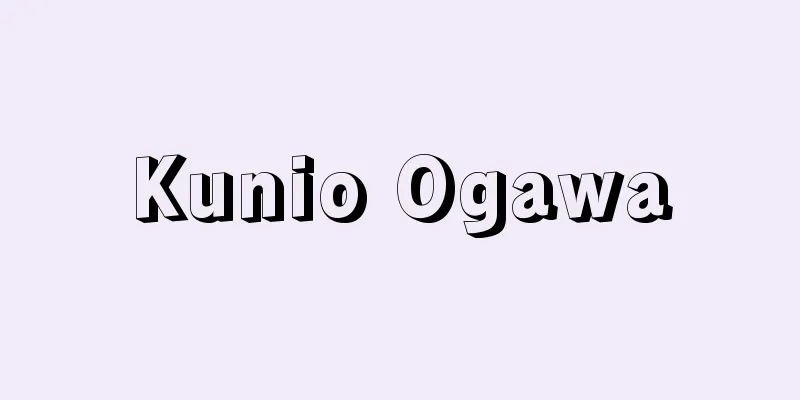Protective trade
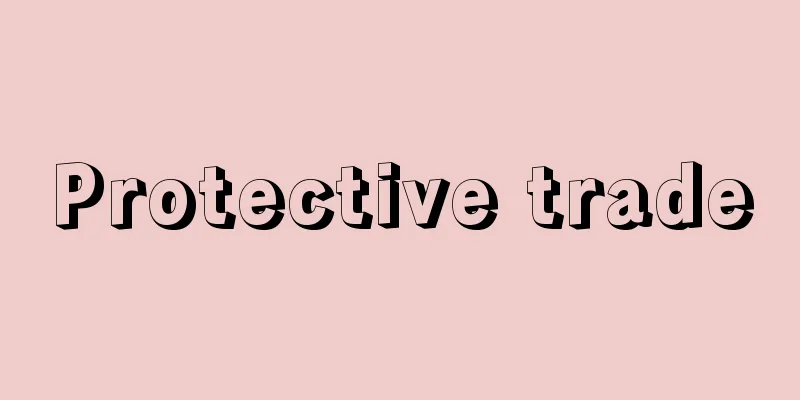
|
A nation tries to protect and develop domestic industries by restricting trade transactions through tariffs and non-tariff barriers. The idea and policy that recognizes and seeks to realize protectionist trade is called protectionism or protectionist trade policy. Protectionism was advocated in the late 18th century and early 19th century by the newly industrializing nations of the United States and Germany in opposition to the free trade doctrine of the British classical school. [Kisuke Tanaka] The basis for protectionismThe reasons for trade protectionism are diverse and not systematized like the theory of free trade. This is because the need for trade protection arises from differences in the economic development status of each country. However, the main reasons can be summarized into the following three points. (1) Protection and nurturing of infant industries Since infant industries cannot compete with developed countries under free trade, they need to be protected from competition with imports through tariffs and other measures. (2) Protection for Increasing Employment In order to maintain and increase employment levels, it is necessary to shift demand from imports to domestically produced goods, for example by tariffs on imports. (3) Protection to improve the balance of payments In order to improve the balance of payments, it is necessary to restrict imports through tariffs, etc., and promote exports through subsidies, etc. The most representative of these is the infant industry protection theory (1), which was advocated by A. Hamilton of the United States and systematized by F. List of Germany. In his book The National System of Political Economy (1841), List developed a theory of protecting infant industries based on the theory of stages of economic development and the theory of productive forces. The theoretical validity of this theory was also recognized by J.S. Mill, a classical scholar. List first divided a nation's economic development into five stages: (a) the hunting age, (b) the pastoral age, (c) the agricultural age, (d) the agricultural-industrial age, and (e) the agricultural-industrial-commercial age. He considered the last stage, in which the productive forces of the three industries of agriculture, industry, and commerce are developed on average, to be the normal state and the ideal stage. However, this state does not occur naturally. Therefore, until the normal state is achieved, the country should adopt protectionism. By imposing tariffs on imported industrial products, prices will rise, but in the future it will be possible to produce them domestically at a lower cost than by importing them from abroad. Therefore, the exchange value lost due to protective tariffs is nothing other than the cost of education for the development of future productive forces. Thus, he argued that free trade should be used only when economic development had reached its final stage, and that until then protectionism should be adopted. According to List, the only country that had reached this stage was Great Britain. When advocating protection for infant industries, the question arises as to what criteria should be used to select infant industries. J.S. Mill stated that industries that should be protected are those that are likely to become self-sufficient after a certain period of protection and nurturing. C.F. Bastable (1855-1945) added to Mill's criteria by stating that protection is permissible if the profits gained after independence more than cover the expenses incurred during the period of protection and nurturing. This criterion for determining whether an industry is an infant industry is known as the Mill-Bastable criterion. [Kisuke Tanaka] Protectionist policy toolsThe policy tools of protectionism include (1) tariffs, (2) foreign exchange controls, (3) import quantitative restrictions, (4) domestic product preferences, (5) import surcharges, (6) export subsidies, and (7) voluntary export restraints. Of these policy tools, which ones have been given priority have varied over time. From the 19th century until World War I, the newly industrializing nations of the time, the United States and Germany, enforced protectionist trade policies to compete with British industry, and the main policy tool of this era was (1). Germany switched to a full-scale protectionist trade policy in 1879, which was the result of Chancellor Bismarck's tariff reforms. During the global depression of the 1930s, (1), (2), and (3), especially (2) and (3), were adopted as new policy tools, and thorough protectionist trade policies were implemented in both currency and trade. In the 1940s and 1950s, during the post-World War II economic recovery, (2) and (3) were also used as the main policy tools. However, due to the promotion of exchange and trade liberalization under the IMF (International Monetary Fund) and the GATT system, the role of (2) and (3) receded in the late 1950s, and (4), (5), and (6) emerged as new tools in their place in the 1960s and 1970s. A typical example of (4) is the Buy American policy, which was used by the United States to defend the dollar; (5) was used by the United Kingdom, Canada, and the United States as a measure to deal with the international balance of payments, and by the EC (European Community, now the EU = European Union) as a measure to protect agricultural products; and (6) was used to promote agricultural exports by the United States and the EC. From the late 1970s to the 1980s, trade frictions broke out among industrialized countries and between industrialized countries and newly industrialized countries. The United States and the EC responded with (7), which can be called a discriminatory safeguard (emergency import restriction measure for imports from specific countries). Therefore, safeguards are in conflict with GATT (now the World Trade Organization, WTO) rules, which require non-discriminatory application, and have been criticized as a solution outside the framework of GATT rules. [Kisuke Tanaka] "Lecture Series on International Economy (3) International Trade" edited by Akamatsu Kaname and Horie Kaoru (1961, Yuhikaku) " ▽ "Trade Policy" by Fujii Shigeru (1977, Chikura Shobo) " ▽ "New Protectionism" by Jean-Marcel Janet, translated by Watanabe Shigeru (1985, Gakubunsha)" ▽ "The Political Dynamics of Protectionism - A Case Study of the American Steel Industry" by Nobayashi Ken (1987, Keiso Shobo)" ▽ "EC Trade Handbook - The Structure of European Protectionism" by Komuro Toshio (1988, Toyo Keizai Shinposha)" ▽ "Protection or Free Trade?" by Henry George, translated and supervised by Yamazaki Gisaburo (1990, Nihon Keizai Shinbun)" ▽ "American Trade Policy and the Free Trade System" by Anne O. Kruger, translated by Hoshino Takeho et al. (1996, Toyo Keizai Shinposha)" ▽ "Douglas A. Irwin, translated and supervised by Kiyoshi Kojima, A History of Free Trade Theory: Against the Tide (1999, Bunshindo)" ▽ "Russell D. Roberts, translated by Jun Sasaki, Learning Economics Through Fables: Why Free Trade is Necessary (1999, Nihon Keizai Shimbun)" ▽ "Michiko Ikeda, From GATT to the WTO: A Modern History of Trade Friction (Chikuma Shinsho)" [References] | | | | | | | | | | | |Source: Shogakukan Encyclopedia Nipponica About Encyclopedia Nipponica Information | Legend |
|
国家が貿易取引に対して、関税や非関税障壁により制限を加えることによって、国内産業の保護・育成などをしようとすること。保護貿易を認め実現しようとする思想や政策のことを保護貿易主義、保護貿易政策という。保護貿易主義は18世紀末から19世紀前半、イギリスの古典学派の自由貿易主義に対抗して、当時、新興工業国であったアメリカとドイツとで主張されたものである。 [田中喜助] 保護貿易主義の根拠保護貿易主義の根拠は多様であり、自由貿易論のように体系化されたものではない。それは保護貿易を必要とする要請が各国の経済発展状況の相違から発生してくるためである。しかし、主たる根拠は次の3点にまとめられよう。 (1)幼稚産業の保護・育成 幼稚産業は、自由貿易では先進国との競争に勝てないので、関税その他の手段によって輸入品との競争から保護する必要がある。 (2)雇用増大のための保護 雇用水準を維持し、増大するためには、輸入関税などによって需要を輸入品から国産品に転換させる必要がある。 (3)国際収支改善のための保護 国際収支を改善するために関税などによる輸入抑制、補助金などによる輸出促進をする必要がある。 これらのうち代表的なものは(1)の幼稚産業保護論である。これはアメリカのA・ハミルトンにより主張され、ドイツのF・リストにより体系化されている。 リストはその著『経済学の国民的体系』(1841)において、経済発展段階説と生産力説に基づき幼稚産業保護論を展開している。これは古典学派のJ・S・ミルにもその理論的妥当性を認められている。リストは、まず国家の経済発展を、(a)狩猟時代、(b)牧畜時代、(c)農業時代、(d)農工時代、(e)農工商時代、の5段階に区分する。これらのうち最後の段階、つまり農工商という三つの産業の生産力が平均的に発展している段階が正常な状態であり、理想の段階であると考えた。しかし、その状態は自然に成立するものではない。そのため正常な状態の達成に至るまで、その国は保護貿易主義を採用すべきである。輸入工業品に関税を課すことにより、価格を騰貴させることになるが、将来は自国で外国から輸入するよりも安価に生産しうるようになる。それゆえ、保護関税のために失う交換価値は、将来の生産力育成のための教育費にほかならない。このように彼は、自由貿易主義は経済発展が最後の段階に到達したときに用いられるべきであり、それまでは保護貿易主義を採用すべきであると主張した。リストによると、この当時に正常な状態に達している国はイギリスのみであった。 幼稚産業保護を主張する場合、幼稚産業をどのような基準で選ぶのかが問題となる。これについてJ・S・ミルは、保護の対象となる産業は一定期間の保護育成後に自立しうる見込みのある場合としている。C・F・バステーブルC. F. Bastable(1855―1945)は、このミルの基準に加えて、自立後に得られる利益が保護育成の期間中に生じた費用を償って余りある場合には保護が容認されうるとしている。このような幼稚産業の判定基準をミル‐バステーブル基準という。 [田中喜助] 保護貿易の政策手段保護貿易の政策手段としては、(1)関税、(2)為替(かわせ)管理、(3)輸入数量制限、(4)国産品優先措置、(5)輸入課徴金、(6)輸出補助金、(7)輸出自主規制、などがある。これらの政策手段のうち、いかなる政策手段が優先されたかは時代により相違している。 19世紀から第一次世界大戦までの間は、当時の新興工業国であったアメリカおよびドイツがイギリスの工業に対抗するため保護貿易政策を強行した時代であり、この時代の主たる政策手段は(1)であった。ドイツは1879年に本格的な保護貿易政策に転換したが、これは宰相ビスマルクの関税改革によるものである。 1930年代の世界的大不況のときには、(1)(2)(3)とくに(2)および(3)が新しい政策手段として採用され、通貨・通商の両面から徹底した保護貿易政策が展開されている。 第二次大戦後の経済復興期における1940年代、50年代にも、(2)と(3)が主たる政策手段として用いられていた。しかし、IMF(国際通貨基金)・ガット体制による為替の自由化と貿易の自由化の推進により50年代末には(2)(3)の役割は後退し、これにかわって60年代、70年代には(4)(5)(6)が新しい手段として登場した。(4)の典型としてはアメリカのドル防衛対策としてのバイ・アメリカンがあり、(5)はイギリス、カナダ、アメリカの国際収支対策、EC(ヨーロッパ共同体。現EU=ヨーロッパ連合)の農産物保護対策として、(6)はアメリカ、ECの農産物輸出の促進に用いられている。70年代の後半から80年代には先進工業国間、先進工業国対新興工業国間の貿易摩擦が激発してきた。これに対してアメリカやECは(7)の手段で対応したが、これは差別的セーフガード(特定国からの輸入品に対する緊急輸入制限措置)ともいうべきものである。したがって、セーフガードは無差別に適用することを原則としているガット(現世界貿易機関=WTO)規定と相反するものであり、ガット・ルールの枠外での解決方法として批判された。 [田中喜助] 『赤松要・堀江薫雄監修『講座 国際経済(3) 国際貿易』(1961・有斐閣)』▽『藤井茂著『貿易政策』(1977・千倉書房)』▽『ジャン・マルセル・ジャヌネ著、渡部茂訳『新保護貿易主義』(1985・学文社)』▽『野林健著『保護貿易の政治力学――アメリカ鉄鋼業の事例研究』(1987・勁草書房)』▽『小室程夫著『EC通商ハンドブック――ヨーロッパ保護貿易主義の構造』(1988・東洋経済新報社)』▽『ヘンリー・ジョージ著、山嵜義三郎監訳『保護貿易か自由貿易か』(1990・日本経済新聞社)』▽『アン・O・クルーガー著、星野岳穂ほか訳『アメリカ通商政策と自由貿易体制』(1996・東洋経済新報社)』▽『ダグラス・A・アーウィン著、小島清監訳『自由貿易理論史――潮流に抗して』(1999・文真堂)』▽『ラッセル・D・ロバーツ著、佐々木潤訳『寓話で学ぶ経済学――自由貿易はなぜ必要か』(1999・日本経済新聞社)』▽『池田美智子著『ガットからWTOへ――貿易摩擦の現代史』(ちくま新書)』 [参照項目] | | | | | | | | | | | |出典 小学館 日本大百科全書(ニッポニカ)日本大百科全書(ニッポニカ)について 情報 | 凡例 |
<<: Bogomils - Bogomil is (English spelling)
>>: Secret Imperial Edict of Bogo
Recommend
Worcestershire sauce - Worcestershire sauce
A type of sauce that is mainly used at the table....
Rana esculenta (English spelling)
… [Takahiro Matsui]. … From [Edible Frog] ...Frog...
Whale grass - Whale grass
A biennial herb of the Brassicaceae family (APG c...
Motocross
…It began in the United States in 1909 and became...
Piedmontite (English spelling)
A mineral with the chemical composition Ca 2 (Al,F...
Yi Am
[Born] King Yeonsangun 5 (1499) [Dead]? A literati...
ACLI - American College of Letters
...In France, the powerful General Confederation ...
Ahmudan - Ahmudan
...The monastic community of over 100,000 monks a...
Kamacite (English spelling)
Also called native iron. Of the nickel-iron alloys...
Mukawa [village] - Mukawa
A village in Kitakoma County in northwest Yamanash...
Small cargo - Konida
〘 noun 〙① Baggage carried by horses during marches...
Tetori Plant Group
It is also read as "Tedori". It is a gen...
Privateer - Shiryakusen
Also known as a chartered privateer. An armed ship...
Copra
…The coconut is scraped off with a grater and squ...
Suilus grevillei (English spelling) Suilusgrevillei
…[Rokuya Imaseki]. . … *Some of the terminology t...
